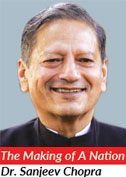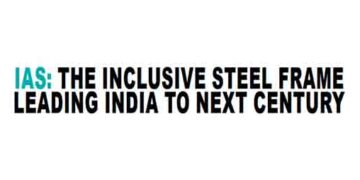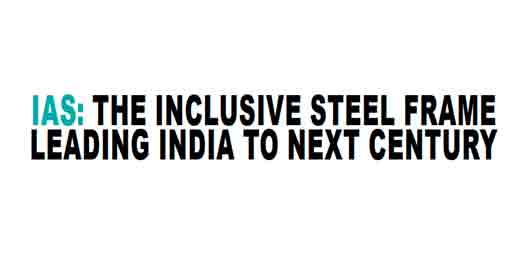 TILL very recently, the Central IAS Association had its bank account in the name of the Central IC&AS Association (Central Indian Civil & Administrative Service Association ) – and from 1948 to 2020 when the last surviving member of the ICS passed on, the Association represented the professional and personal concerns of the ICS, and its successor service, the IAS .
TILL very recently, the Central IAS Association had its bank account in the name of the Central IC&AS Association (Central Indian Civil & Administrative Service Association ) – and from 1948 to 2020 when the last surviving member of the ICS passed on, the Association represented the professional and personal concerns of the ICS, and its successor service, the IAS .
This Service was established in 1948 to ensure that the highest standards of selection, training and administration are maintained , besides of course , ensuring that there is continuous flow of administrative best practices and norms between the Union and the state governments.
Patel’s idea opposed
When Sardar Patel insisted that independent India needed an impartial, fair and strong civil service, he had to face a lot of opposition because many members of the Constituent Assembly had been on the receiving end from the members of the ICS. In fact, even Nehru is supposed to have said that the ICS was “neither Indian, nor civil nor a service!” It was indeed a hyperbolic expression, as from 1922, when the ICS exam began to be held simultaneously in London and Allahabad, the component of Indian recruits had become progressively higher.
The term ‘Civil’ was only to distinguish it from military, and Service it always was because there was a professional core to it – that of governance as per the extant laws.
It is true that the fundamental law to govern India was in state of evolution, especially after the Government of India Act of 1935, which transferred many functions to the provincial (state) governments, but the ICS played an important and significant role in the framing of subordinate legislation which became the basis of administering the country, especially during the turbulent times of the Partition.
Continuity and change
What is significant to note is the element of continuity and change. It is important to note that what has changed is the ‘fundamental direction’ of governance. From being revenue collectors to development administrators is a mighty change , but what has not changed is the ability to implement government policy, which changes, and ought to change over time.
As India has made the transition from an agricultural to a post- industrial economy, revenue and agriculture are no longer as salient in governance, for less than 15 per cent of the GDP, and less than half the population is now dependent on agriculture. Even for those engaged in agriculture, a large proportion of the income comes from the non-farm sector, and within the farm sector, higher incomes accrue from horticulture, poultry and dairying. Naturally both at the field and the policy levels, the engagement of the IAS officers is more with skilling people for livelihoods as well as for infrastructure which ensures that the road to growth is on a smooth trajectory.
Spectrum of issues
As such, unlike the Collectors of yore who rode the horseback to settle revenue cases and dispense justice, the DM of today is looking at an entire spectrum of issues – from ICDS centres to farm-centric programmes, financial inclusion, legal literacy and skilling. At the policy level too, Secretaries are engaged in a range of new issues – from geographical indicators, competition law, trade issues and multilateral co-operation. All these changes have been incremental, though when one looks back, one can notice the very different roles which the ICS and IAS helm at both the field and policy levels.
And yes, there are differences. A hundred years after the first simultaneous examination in 1922, we have over one third women in the final selections for the CSE this year. The ICS was an exclusive upper class male reserve. The IAS is certainly far more inclusive now: it is also more representative; for a conscious effort is now being made to include everyone – from the EWS to those who are specially-abled.
The examination is held in all the languages mentioned in the Eighth Schedule, and over a million aspirants try to join the steel frame. And it is this inclusive steel frame which will lead India that is Bharat, to the next century!
















